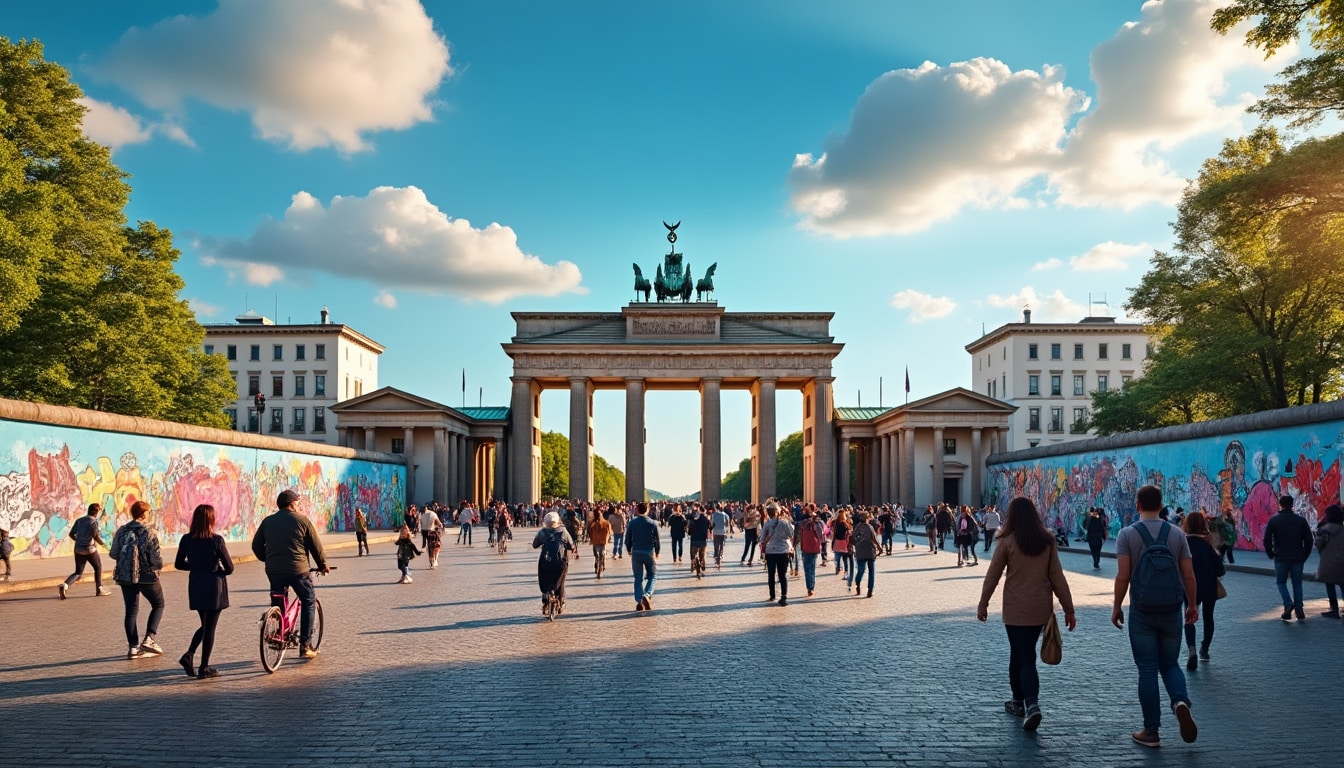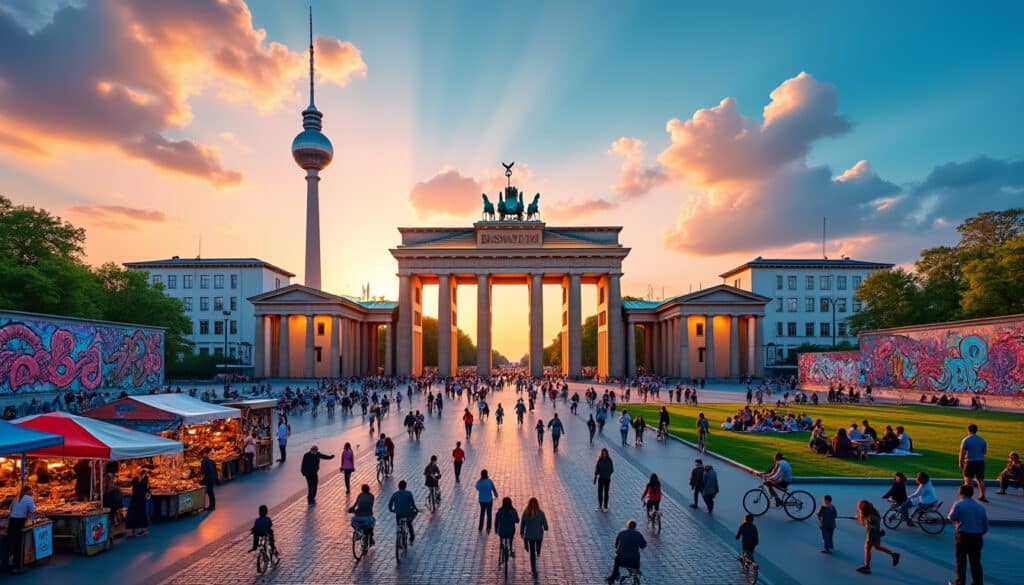Berlin, the vibrant capital of Germany, stands as one of Europe’s most intriguing cities, known for its rich history, diverse culture, and dynamic growth. As the largest city in Germany, it boasts a unique blend of historical significance and modern vibrancy, making it a magnet for tourists and locals alike. This article delves into the demographics and geography of Berlin, exploring what makes it a fascinating urban mosaic.
The Geographical Layout of Berlin: A Capital Like No Other
Berlin’s geographical location in northeastern Germany plays a key role in its cultural and economic significance. Positioned along the River Spree, Berlin is the epicenter of the Berlin-Brandenburg Metropolitan Region. This region is not just significant for its size, but for its role as a political and economic powerhouse in Germany.
Covering an area of about 891 square kilometers, Berlin is renowned for its lush green spaces and a mix of historical and contemporary architecture. The city’s geography is a tapestry of seemingly endless possibilities, from the bustling streets of Mitte to the serene landscapes of Grunewald. The famous Fernsehturm, one of Berlin’s most notable landmarks, provides a panoramic view of this sprawling metropolitan area, showcasing the geographical diversity within the city limits.
Berlin’s urban design is an amalgamation of historical influences and modern innovation. As one traverses Mitte, the cultural and political heart of the city, one can find remnants of Berlin’s tumultuous history interlaced with modern-day architectural marvels. The city’s commitment to sustainability is evident in its widespread green spaces, with parks and gardens making up a significant portion of the urban landscape.
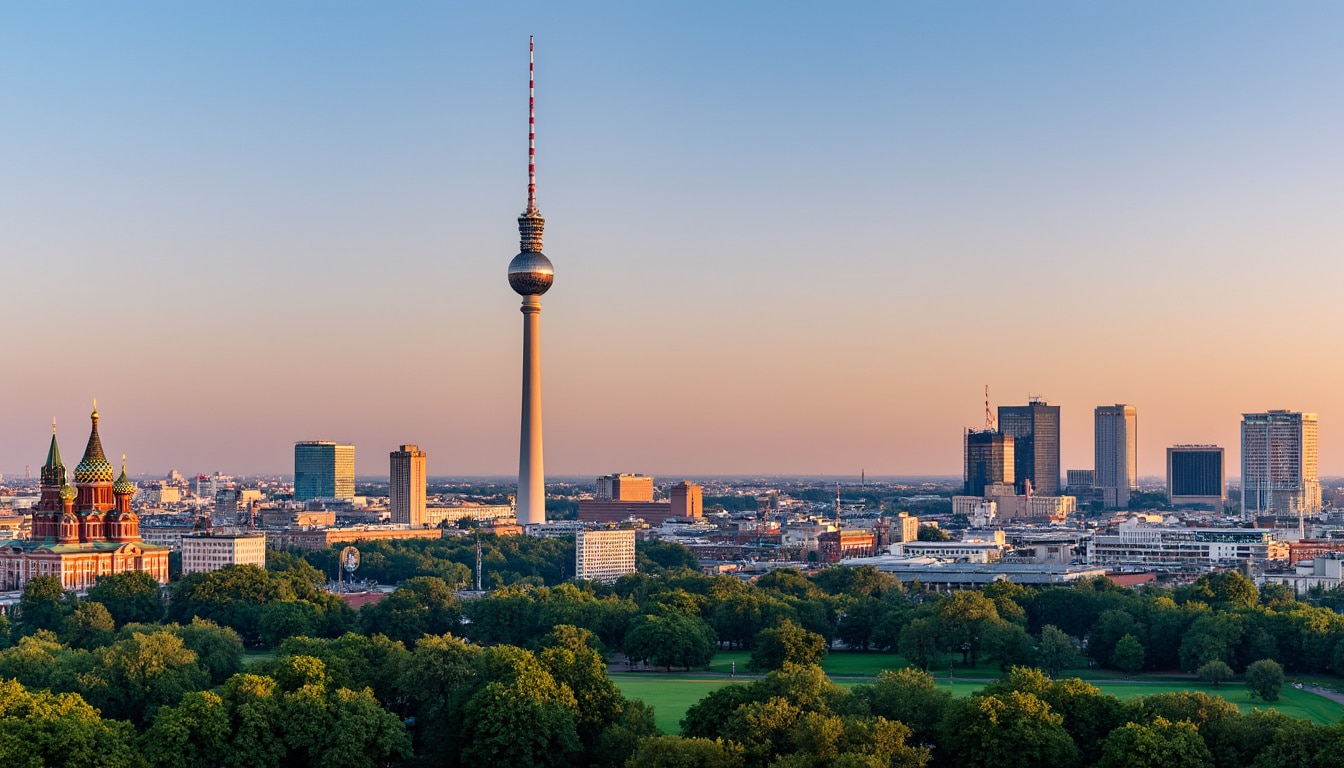
The geographical diversity is further accentuated by the numerous lakes that dot the city’s landscape. Lake Wannsee and Lake Müggelsee are two of the largest, serving as popular recreational hubs for locals and visitors alike. The presence of these water bodies not only adds to the city’s aesthetic appeal but also influences the local climate, providing cool breezes during the summer months.
For those seeking to explore beyond the urban environment, the surrounding Berlin-Brandenburg region offers an array of natural landscapes. The Spreewald and Märkische Schweiz are ideal for nature excursions and offer a differing perspective on the region’s geographical make-up compared to the urban expanse of Berlin. These areas are characterized by rolling hills, dense forests, and rich biodiversity, providing ample opportunities for hiking, cycling, and wildlife observation.
Berlin’s commitment to public transport infrastructure is another geographical highlight. The city’s extensive network of buses, trams, and trains makes it not only accessible but efficiently connected. This system allows both residents and tourists to navigate the sprawling urban environment with ease, enhancing the city’s appeal as a travel destination. More about using Berlin’s public transport effectively can be found on this guide to safety tips in Berlin.
In essence, Berlin’s geographical features are as diverse as its history. From the architectural grandeur of the Reichstag building to the natural retreats within city parks, this unique blend of urban and natural elements makes Berlin a truly captivating destination. Its geographical versatility is not only a draw for tourists but also a key factor in the ongoing development and expansion of the city.
The Demographic Mosaic of Berlin: A Study in Diversity
Berlin’s demographics present a fascinating picture of diversity and inclusivity, reflective of its complex history and contemporary status as a cosmopolitan hub. The city’s current population stands at approximately 3.75 million, though the wider Berlin-Brandenburg Metropolitan Region comprises over 5.8 million people. This multicultural population hails from more than 180 countries, making Berlin a true melting pot of cultures.
Historically, Berlin has been a haven for migrants. This dates back to 1685 when the Edict of Potsdam extended religious freedom and tax incentives to French Huguenot refugees, marking the beginning of a long tradition of welcoming immigrants. In contemporary times, the city continues to embrace this legacy. Berlin hosts substantial foreign-born populations: the Turkish community, for instance, stands at 101,000, representing the largest Turkish enclave outside of Turkey. Other significant groups include individuals from Poland, Italy, Serbia, and Russia.
Beyond the European continent, Berlin attracts residents from Asia, Africa, and the Americas, contributing to its colorful demographic tapestry. The Vietnamese and American communities, among others, have notably increased in recent years, adding to the rich cross-cultural interactions that are a hallmark of city life here.
Berlin’s demographic distribution is not just diverse in terms of origin but also in age. With a significant portion of the population under 45, the city maintains a dynamic and youthful energy. This youthfulness drives Berlin’s innovation and creativity, manifesting in vibrant cultural events like the Berlin International Film Festival, Berlin Fashion Week, and the thriving Berlin startups scene.
Religious affiliation in Berlin is another aspect of its demographic identity. Approximately 60% of the population declares no religious affiliation, earning Berlin the nickname of “the atheist capital of Europe.” Among those who do identify with a faith, Protestantism and Roman Catholicism are the most prominent, followed by a growing Muslim population, reflective of recent immigration trends.
Berlin Cuisine is a testament to its multicultural demographic. The city’s culinary landscape ranges from traditional German dishes to international cuisines, mirroring the diverse ethnic backgrounds of its residents. You can explore more about the famous foods of Berlin here, where the blend of flavors speaks volumes of the city’s cultural integration.
Understanding Berlin’s demographics provides deeper insights into how the city evolves and thrives. With a rich influx of cultures and continuous population growth, Berlin remains a leading example of urban diversity, embracing its multicultural identity with open arms.
Berlin’s Historical Impact on its Current Demographics
The history of Berlin is intricately linked with its current demographic profile. From its early beginnings as a small settlement in the 1200s to becoming the heart of the Prussian empire, Berlin’s journey has been marked by significant historical events that have shaped its population and culture.
In the 18th century, the city experienced a notable population increase due to immigration policies like the Edict of Potsdam. The 19th century saw Berlin expand rapidly as it emerged as a central hub during the industrial revolution, attracting workers and intellectuals from across Europe.
The 20th century presented both opportunities and challenges. Berlin’s status as a major European city was cemented with events such as the Berlin Tech Week, which fostered innovation and technological advancements. However, the city also faced adversities during the World Wars and subsequent division into East and West Berlin during the Cold War. This division significantly impacted the demographic structure, as people moved across borders seeking better opportunities or escaping political oppression.
After the fall of the Berlin Wall in 1989 and the reunification of Germany, the city underwent a demographic renaissance. With newfound freedom and integration, Berlin’s population grew, incorporating diverse groups and ideas that have enriched its social and cultural fabric. The city’s rebuilding post-reunification embraced ethnic inclusivity, setting the stage for Berlin’s world-renowned arts scene, including the Berlin Art Week and the iconic Berlin International Film Festival.
Today, Berlin’s historic neighborhoods, such as Kreuzberg and Neukölln, serve as living museums of this dynamic history. These areas are home to artists, immigrants, and entrepreneurs, all contributing to Berlin’s reputation as a center for creativity and innovation. The blend of history and modernity is palpable in these neighborhoods, making them popular destinations for those visiting Berlin.
Furthermore, Berlin’s historical architecture offers a backdrop to its demographic story. From the grandeur of the Brandenburg Gate to the solemnity of the Holocaust Memorial, the city’s buildings tell a tale of resilience and constant evolution. More details on Berlin’s architectural heritage and urban features can be explored here.
The interplay between Berlin’s history and demographics is a testament to the city’s capacity for change and adaptation. As Berlin continues to grow, it carries forward the lessons of its past, forging a future that remains inclusive, diverse, and vibrant.
The Role of Berlin’s Public Transport in Demographic Dynamics
Public transport plays a pivotal role in Berlin’s demographic dynamics, serving as a vital link across the city’s diverse urban landscape. With an extensive and efficient network of buses, trams, U-Bahn, and S-Bahn, Berlin’s public transport system enables seamless connectivity, shaping the everyday life of its residents.
Accessibility to public transport has a profound impact on urban development and demographic distribution. It allows people from various social and economic backgrounds to access different parts of the city with ease, facilitating economic activities and encouraging social interactions. This accessibility is crucial for events like the Berlin Fashion Week and Berlin Tech Week, drawing visitors and participants from across the globe.
The affordability and convenience of Berlin’s public transport system make it an attractive option for residents, including the city’s growing migrant population. This inclusivity is evident in the diversity of neighborhoods connected by the transport network, each with its unique cultural identity creating a rich tapestry of urban life.
Berlin’s commitment to sustainable transport solutions is reflected in its continuous efforts to enhance public transport infrastructures, such as expanding bike lanes and introducing eco-friendly buses. These initiatives contribute to reducing the city’s carbon footprint, promoting a healthier urban environment for current and future generations.
Comprehensive public transport accessibility is not only about mobility but also about improving the quality of life for Berlin’s residents. It enables people from various communities to explore the cultural and culinary offerings across the city. To learn about Berlin’s local dining customs, you can visit this guide on meal times in Berlin.
For tourists, the public transport system is a gateway to experiencing Berlin’s cultural and historical wealth. From the vibrant arts scene at the Berlin Art Week to the culinary adventures found within its diverse neighborhoods, getting around the city is a seamless experience. The ease of travel attracts a steady influx of visitors, reinforcing Berlin’s status as a major tourism hub in Europe.
Ultimately, Berlin’s public transport plays an indispensable role in shaping the city’s demographic dynamics. By connecting people, inspiring interactions, and supporting sustainable growth, it remains the lifeline of urban mobility in Berlin.
Projected Population Growth and Demographics of Berlin
As we look to the future, Berlin’s population dynamics are anticipated to evolve significantly. The Berlin Senate’s forecasts suggest that by 2030, the urban population will reach approximately 3.75 million, with notable demographic shifts shaping the city’s cultural and economic landscape.
One of the most significant trends is the increasing diversity of Berlin’s population. Continued immigration, particularly from EU countries and beyond, is expected to bolster the city’s multicultural ethos. The Turkish, Polish, and Italian communities, among others, are anticipated to grow, enriching Berlin’s demographic profile further.
The aging population is another notable demographic feature. With the average age projected to rise, there will be greater demand for healthcare and elder support systems. However, this will likely be counterbalanced by the city’s youthful energy, driven by its substantial 6 to 18-year-old population.
Overall population growth will also influence urban infrastructure and housing demands. The city is expected to implement sustainable urban planning strategies to accommodate this growth efficiently, focusing on sustainable housing solutions and innovative public services.
Berlin’s status as a tech and innovation hub will likely attract more professionals within the fields of technology and creative industries. This emphasis on innovation is bound to enhance Berlin’s global reputation, drawing investors and entrepreneurs to the city’s burgeoning startup scene.
Additionally, Berlin’s active cultural landscape ensures a continuous influx of creative talents, contributing to its arts and entertainment sectors. The city’s pivotal role in hosting international cultural events, such as the Berlin International Film Festival and the thriving Berlin Art Week, will remain a major attractor for both creators and audiences worldwide.
The educational sector in Berlin is also set to adapt, with universities and research institutions expanding their international programs to cater to the growing demand. These institutions are crucial in cultivating an educated workforce that will sustain Berlin’s growth and innovation.
In conclusion, Berlin’s demographic projections point towards a vibrant and dynamic future. The city’s commitment to diversity, cultural richness, and sustainable development positions it as a leading city in 2025 and beyond. It remains a beacon of progress, inspiring cities worldwide to adopt inclusive and forward-thinking strategies.
FAQ: Demographics and Geography of Berlin
- 🌍 What is the population of Berlin in 2025?
As of 2025, Berlin’s population is estimated to be approximately 3.75 million.
- 🏙️ How diverse is Berlin’s population?
Berlin is incredibly diverse, with residents hailing from over 180 countries, contributing to a vibrant multicultural atmosphere.
- 🛤️ How does the public transport system in Berlin support its demographics?
Berlin’s public transport system is extensive and accessible, efficiently connecting various neighborhoods and promoting inclusivity across the city.
- 📈 What are the future demographic trends for Berlin?
The population is expected to grow, with increasing diversity and an aging population, emphasizing the need for sustainable urban planning and innovative services.
- 🎭 What role does culture play in Berlin’s demographic composition?
Culture is central, with events like the Berlin International Film Festival and Berlin Art Week highlighting the city’s creative pulse and attracting talents globally.
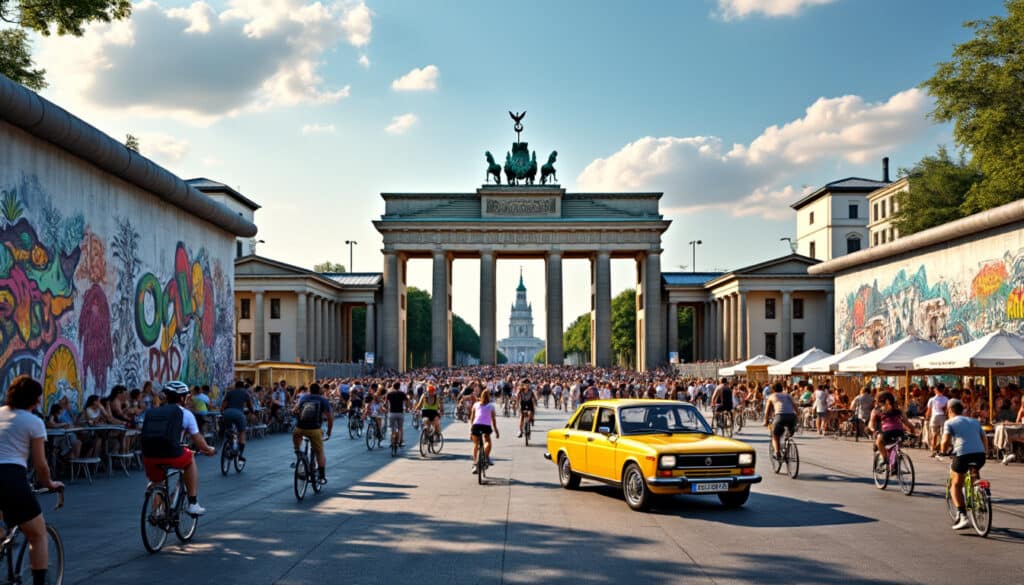
Fun Facts & Curiosities About Berlin
Berlin, a city of rich history and vibrant culture, never fails to captivate those who explore its streets. Renowned for its eclectic blend of old-world charm and contemporary vigor, Berlin is a treasure trove of fascinating facts and unexpected discoveries.…
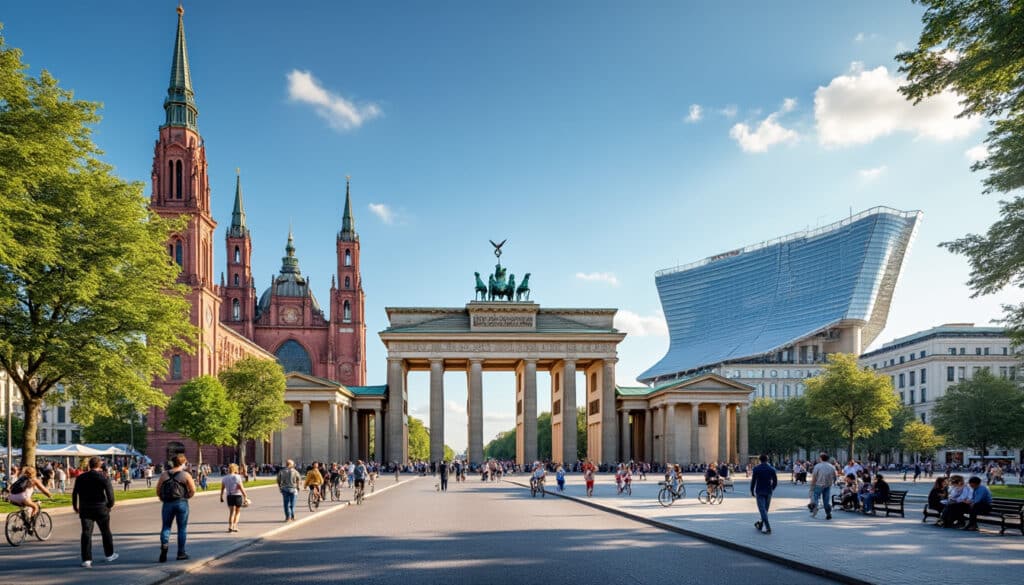
Architecture and urban features of Berlin
Berlin stands as a living testament to the intersection of architectural evolution and rich history. The city’s skyline is a mosaic of styles, reflecting its tumultuous and vibrant past. From the grandeur of the German Empire to the stark functionalism…

Berlin, a city that never stops moving, offers a multitude of experiences to its residents. From arts and technology to the vibrant nightlife, daily life in Berlin is both invigorating and diverse. For expats and locals alike, the city is…

Unveiling the fascinating history of Berlin is akin to peeling back the layers of a vibrant and tumultuous past. From its origins as a modest trading settlement to its critical role on the world stage during various pivotal moments of…
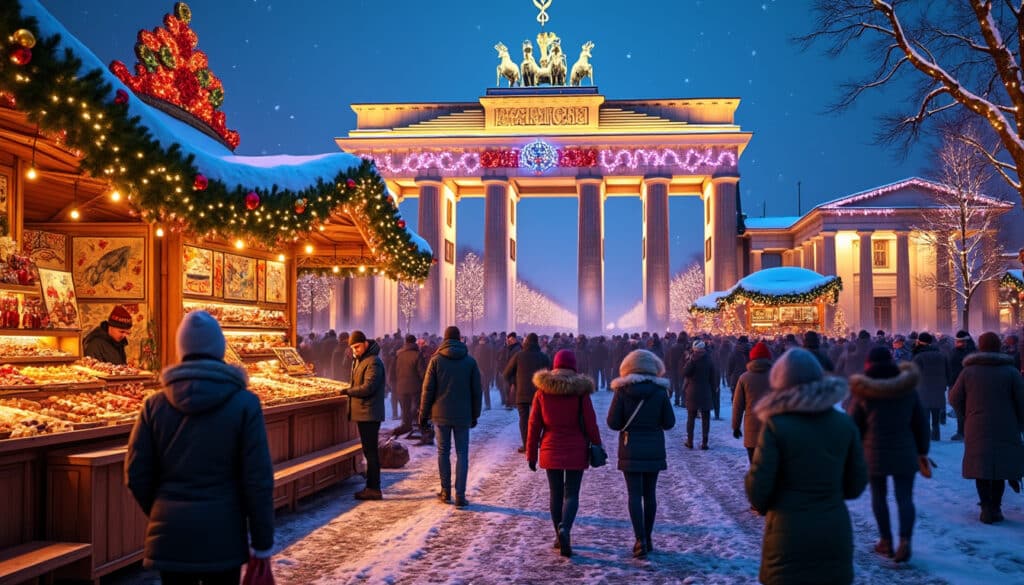
Holidays and celebrations in Berlin
Berlin, a city renowned for its vibrant cultural tapestry and energetic spirit, celebrates life through a diverse array of holidays and festivities. As one immerses in the lively pulse of this city, the celebrations not only reflect its deep-rooted history…

Language and spelling of Berlin
Berlin is not just Germany’s capital but also a hub of diverse cultures, traditions, and languages. With its blend of history and modernity, the city offers a unique linguistic experience. Travelers and residents alike are exposed to a rich tapestry…
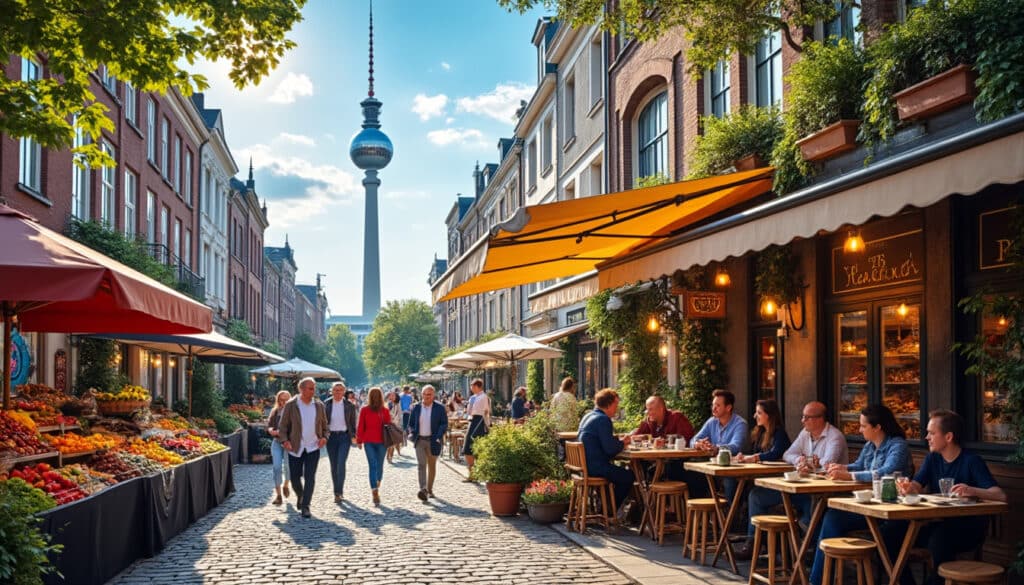
Local tips for tourists in Berlin
Berlin, the vibrant capital of Germany, is a city teeming with history, culture, and an unrivaled nightlife. While the must-see landmarks such as the Brandenburg Gate and the Berlin Wall are well-known, there’s a treasure trove of local secrets that…
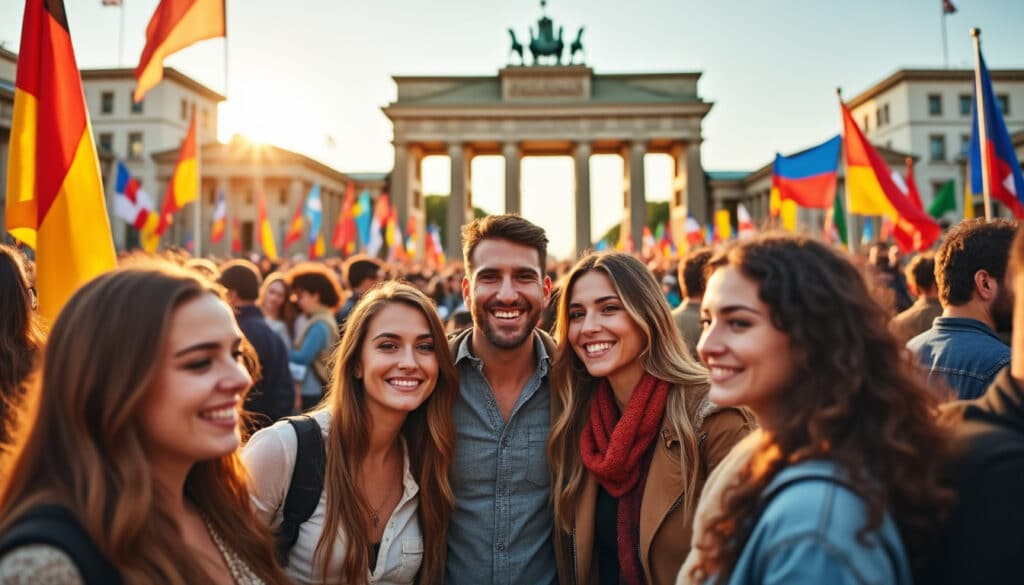
Names, flags, and identity of Berlin
The city of Berlin, known for its rich history and dynamic urban life, stands as a testament to resilience and cultural diversity. From its iconic bear-emblazoned flag to the various names it has been associated with over centuries, Berlin’s identity…
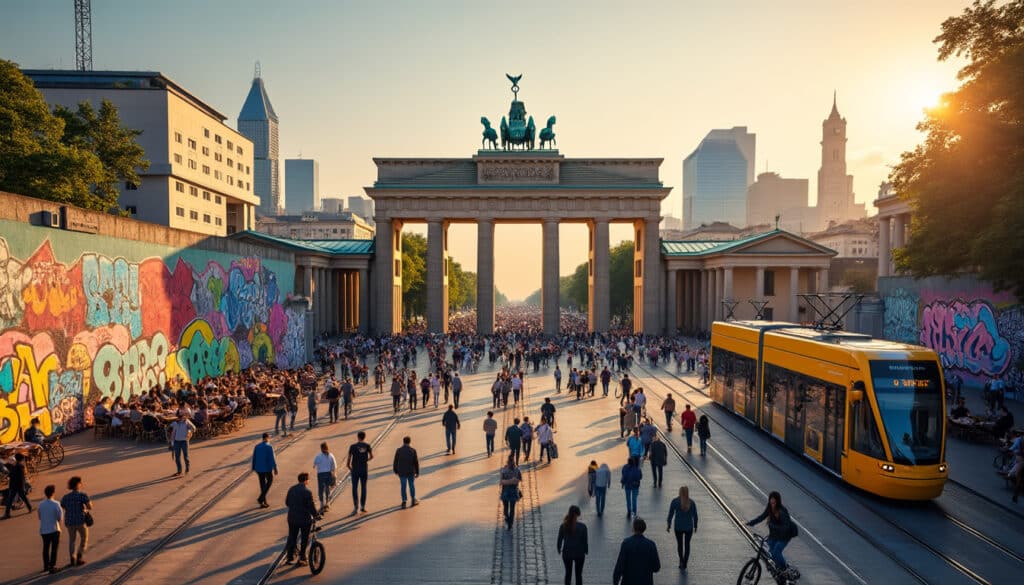
Reputation and identity of Berlin
Berlin, a city of transformation and dynamic culture, has sculpted a unique identity recognized worldwide. This vibrant metropolis offers a captivating blend of history, art, and contemporary life, shaping its reputation as a global cultural epicenter. From the iconic East…

Berlin, a dynamic city that never sleeps, is not only famous for its rich history, vibrant culture, and bustling nightlife, but also for its intricate relationship with time. As a city that exists at the crossroads of the past and…
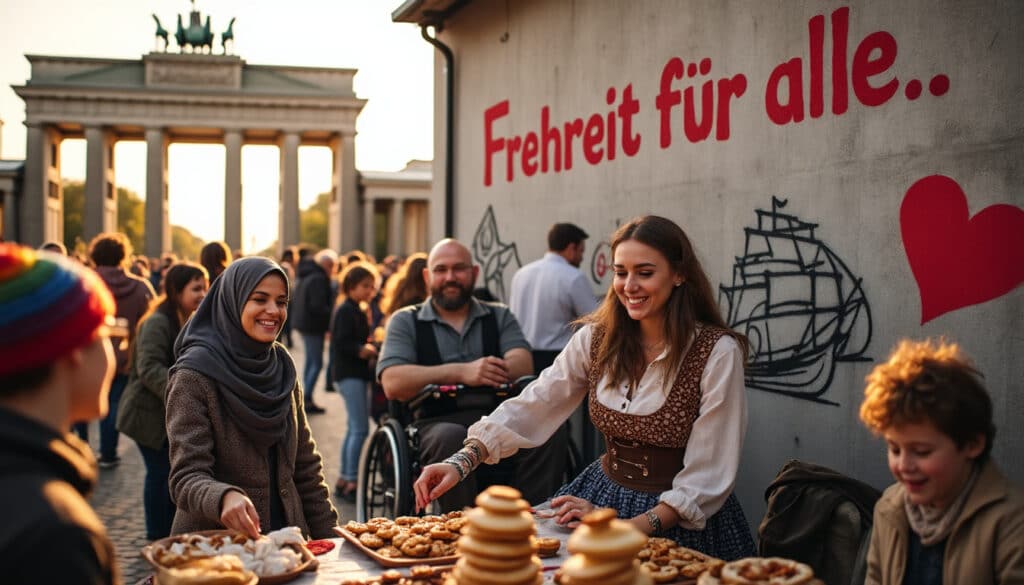
Unusual facts and social issues in Berlin
Berlin, the eclectic heart of Germany, pulsates with vibrant energy, drawing travelers and culture enthusiasts from around the globe. While its rich history and monumental landmarks often steal the spotlight, the city is peppered with quirky and intriguing facts that…

What does Berlin look, smell, feel like?
Berlin, the heart of Germany, is a city that tantalizes all senses. From its historic architecture to the dynamic street art, the pulse of Berlin is felt in every corner. Visitors are often captivated by the blend of vibrant city…

